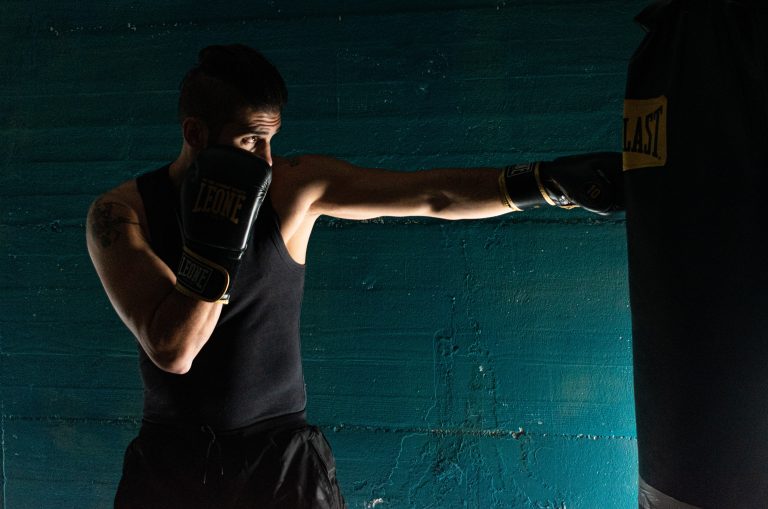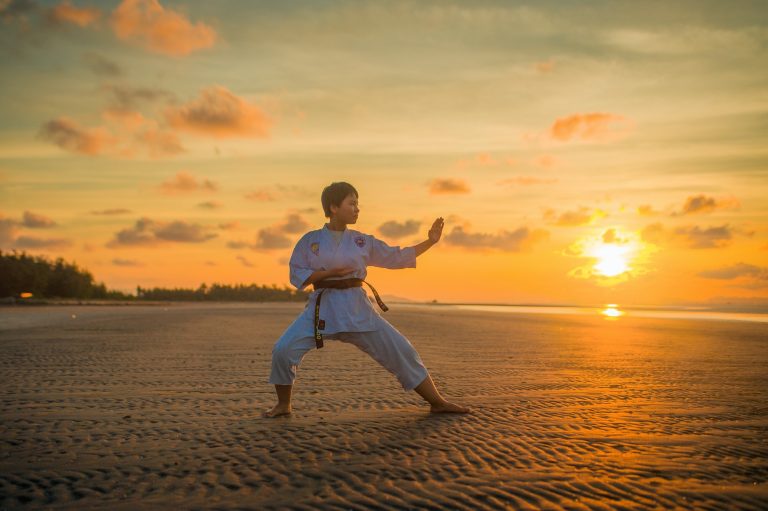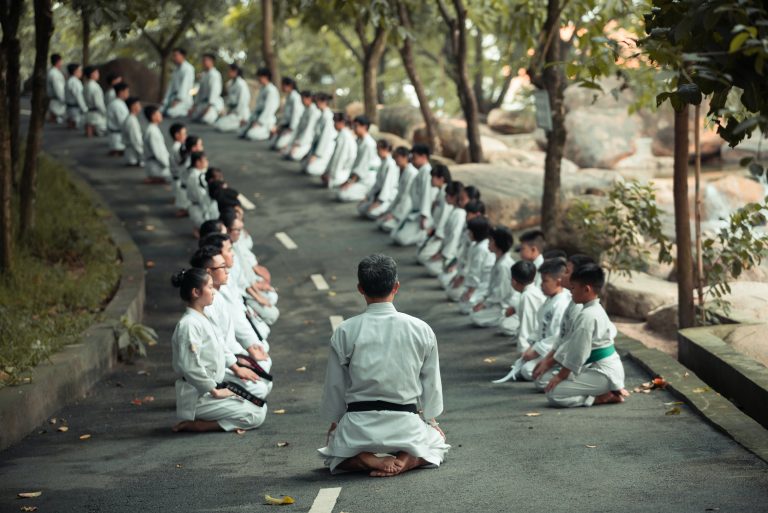Karate: Is It a Martial Art or Combat Sport?
Karate is a well-known activity popular across the world. It is frequently practiced as both a martial art and combat sport, making it difficult to classify which it is exactly. In this blog post, we will provide an in-depth overview of karate and determine whether it is better classified as a martial art or combat sport.
What Is Karate?
Karate is a form of martial arts employing striking, kicking, punching, and blocking techniques with particular emphasis on the empty-hand limitations. It originated in the Ryukyu Islands of Japan, which is today a part of Okinawa Prefecture. It’s thought that karate was developed by the residents of Okinawa afterChinese traders introduced various forms of martial arts to the area. Therefore, karate has significant influence from Chinese martial arts and is often compared to similar Japanese martial arts such as judo and aikido.
The original name of karate, Karate-Do, translates as “Way of the Empty Hand”, reflecting its combat and self-defense roots. Unlike many other martial arts, karate does not rely on body armor or weapons – instead using only empty-handed techniques. Kata (forms) are also core to karate, requiring practitioners to memorize and perform specific pre-arranged movements and techniques in a set form.
Over the years karate has developed into various forms such as Shotokan, Goju-Ryu, and Wado-Ryu to name a few. All have their own principles, rules and aesthestics with differing levels of competition and engagements in contact sparring.
Is Karate A Martial Art Or Combat Sport?
Karate is both a martial art and combat sport, though it is slightly more focused on martial art principles. As a martial art it focuses on the physical, mental and spiritual aspects of training and development. Through kata practice practitioners develop focus and physical technique whilst combat sparring allows for those physical techniques to be honed into practical application.
At its heart, the objective of karate is to be able to protect oneself from any harm. There is an emphasis on understanding the technical applications of all techniques and ensuring one’s own safety should kata or sparring take place. Karate is therefore closely associated with ‘rule-oriented’ combat sports such as judo, taekwondo or hapkido.
As far as competitive fighting is concerned, karate has historically not been adopted as the primary martial art by professional mixed martial artists due to its reliance on self-defense techniques; professional mixed martial arts focus on striking, takedowns and submissions. Nevertheless, karate techniques have been adopted in various forms of mixed martial arts such as Sanshou/San Shou and K-1.
At a recreational level, karate competitions are then divided into several rule sets depending on the governing body. Traditional full contact tournaments with heavy emphasis on self-defense without striking the head are the most common type, often under the banner of Karate ‘Do’. Point based competitions such as WKF allow a greater variety of strikes including headshots but with more emphasis on flashy tricks than effectiveness. These events usually have more complex rules but lead to greater scope for an audience to enjoy.
Benefits Of Practicing Karate
Practicing karate looks great on the outside: it’s fun, challenging and impressive to watch. But what are the actual benefits of practicing karate? Let’s take a look:
- Strengthen Core Skills: Practicing karate increases strength, flexibility and stamina due to focusing on intricate footwork and dynamic motions.
- Boost Focus & Concentration: Sparring and kata require intense concentration – focusing on the technique being used, the opponent (or the imaginary opponent!), and what defense needs to be applied. These skills can easily be transferred to studying for exams or surviving a stressful day at work!
- Learn Self-Defense: Ultimately, karate is used as a way of defending oneself. Even at recreational level, sharpening one’s hand speed, balance and reflexes helps to improve overall self-defense capabilities.
- It’s Fun & Interesting: Last but not least, practicing karate is an incredibly fun activity. It allows you to challenge yourself in a safe environment with helpful coaches and trainers.
Conclusion: Is Karate A Martial Art Or Combat Sport?
From our in-depth exploration of karate and its history, we can conclude that it falls between categories being both a martial art and combat sport. Karate has significantly more in common with martial art than combat sport and has been developed as a way of defending oneself without using weapons or body armor. While some forms of karate are used in professional fighting such as Sanshou/San Shou and K-1, it is primarily practiced as a martial art with competitions being separated into rule sets such as full contact tournaments and point based competitions.
When practicing karate, practitioners can expect to experience numerous benefits such as improved core skills, increased focus & concentration levels and learning effective self-defense techniques – all while having heaps of fun! Therefore, we strongly recommend giving karate a try if you’re looking for an engaging activity that is enjoyable yet challenging.
Karate: Is It a Martial Art or Combat Sport?
Karate is a popular sport and martial art that originated in Japan. It is a form of self-defense that has evolved into a competitive sport. However, many people are confused about whether karate is a martial art or combat sport. In this blog post, we will answer the most frequently asked questions about karate and explore the differences between it as a martial art and a combat sport.
What is the difference between martial arts and combat sports?
Before we dive into whether karate is a martial art or combat sport, it is essential to understand the difference between the two.
Martial arts are a set of practices that focus on improving physical and mental strength, self-discipline, and self-defense. Martial arts have a strong philosophical foundation and usually involve spiritual or ethical principles.
On the other hand, Combat sports are a type of sport that involves physical contact and aim to defeat an opponent, often through the use of grappling or striking techniques. In combat sports, athletes engage in matches or fights with a set of rules and guidelines.
Is karate a martial art or combat sport?
Karate is both a martial art and a combat sport. It has its roots in combat and self-defense techniques but has also evolved into a competitive sport with set rules and regulations.
As a martial art, karate teaches self-defense techniques, physical and mental strength, discipline, and philosophy. The focus is on developing the individual as a whole, rather than just physical conditioning.
As a combat sport, karate involves competition with other athletes, using a set of rules and safety equipment. Competitions are usually divided into weight classes and involve both kumite (sparring) and kata (forms).
What are the benefits of practicing karate as a martial art?
Practicing karate as a martial art has many benefits, some of which include:
- Self-defense: Karate teaches essential self-defense techniques that can be useful in dangerous situations.
- Physical fitness: Karate involves full-body workouts that improve strength, flexibility, endurance, and coordination.
- Mental strength: Karate teaches discipline, focus, self-confidence, and inner strength that can be applied to various aspects of life.
- Culture and Philosophy: Karate has a rich philosophic system that teaches ethics, morality, and spirituality that can help improve overall self-awareness and wellbeing.
What are the benefits of practicing karate as a combat sport?
Practicing karate as a combat sport also has many benefits, some of which include:
- Competition: Karate competitions offer athletes the opportunity to test and showcase their skills against other skilled athletes and develop a competitive spirit.
- Physical fitness: Karate competitions can be intense and rigorous, providing a full-body workout for athletes and improving their overall physical conditioning.
- Mental strength: Karate competitions require focus, discipline, and mental toughness, which can help athletes develop stronger mental fortitude and resilience.
- Social engagement: Karate competitions involve meeting and engaging with other athletes from different places, which can create a sense of community and camaraderie.
What are the different types of karate competitions?
Karate competitions usually involve two different types of events:
- Kata: Kata competitions involve athletes performing a set of predetermined movements that simulate a fight against imaginary opponents. Scores are based on speed, power, and technical execution.
- Kumite: Kumite competitions involve sparring with an opponent. Athletes are divided into weight classes and compete on a designated mat area. Points are awarded for strikes and kicks landed on the opponent.
Conclusion
In conclusion, karate is both a martial art and a combat sport. As a martial art, it focuses on self-defense techniques, physical and mental conditioning, and philosophical principles. As a combat sport, it involves competition with other athletes, using a set of rules and guidelines. The benefits of practicing karate as a martial art and combat sport are numerous and include physical fitness, mental strength, self-defense, and social engagement. Whatever your reason for practicing karate, it is essential to find a qualified trainer and instructor who can guide you along the way.
Inhaltsverzeichnis






